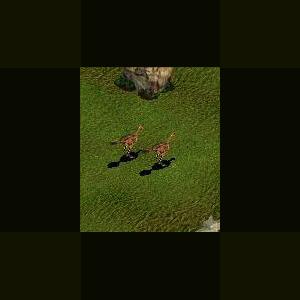About This File
Sinornithosaurus (derived from a combination of Latin and Greek, meaning 'Chinese bird-lizard') is a genus of feathered dromaeosaurid dinosaur from the Lower Cretaceous Period (Middle Barremian) of the Yixian Formation in what is now China.
It caused a sensation because it was the fifth of the non - avian feathered dinosaur genera discovered by 1999. It was collected from the Sihetun locality of western Liaoning. It was in Layer 6, lower (Chaomidianzi) Yixian Formation, Jehol Group.
The holotype specimen is IVPP V12811, in the collection of the Institute of Vertebrate Paleontology and Paleoanthropology in Beijing, China. Another specimen, NGMC - 91, is probably a juvenile Sinornithosaurus. Qiang et al. (2001) were reluctant to name NGMC - 91 because, although the specimen is completely articulated, almost all of the bones shattered when the fossil slabs were split, so that only the silhouettes of theses bones are clear in most of the part and counterpart. This obscured diagnostic skeletal features, which made the specimen's genus uncertain. also called "Dave", is in the collection of the National Geological Museum of China. It was collected in Fanzhangzi quarry, near Lingyuan City, Liaoning Province, China. This is around 130km from the Sihetun locality. A specimen of the fish Lycoptera is also preserved near the foot of NGMC - 91.
Xu Xing described Sinornithosaurus and performed a phylogenetic analysis which demonstrates that it is basal, or primitive, among the dromaeosaurs.he has also demonstrated that features of the skull and shoulder are very similar to Archaeopteryx and other Avialae. Together these two facts demonstrate that the earliest dromaeosaurs were more like birds than the later dromaeosaurs were. This contradicts one argument made by critics of the theory that birds evolved from dinosaurs. See Temporal paradox (paleontology).



Recommended Comments
There are no comments to display.
Create an account or sign in to comment
You need to be a member in order to leave a comment
Create an account
Sign up for a new account in our community. It's easy!
Register a new accountSign in
Already have an account? Sign in here.
Sign In Now